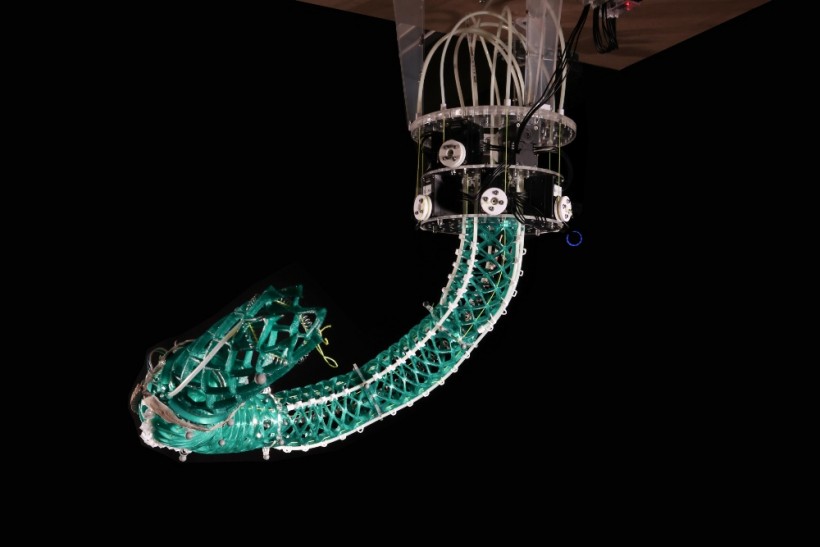Researchers at the Swiss Federal Institute of Technology Lausanne (EPFL) have unveiled a novel robotic structure, the "trimmed helicoid," inspired by the movements of elephant trunks and octopus tentacles, Interesting Engineering reports.
This innovation promises to revolutionize the field of robotics, ushering in a new era of soft and adaptable robots designed for delicate tasks and safe human-robot interactions.
The team, led by Professor Josie Hughes, collaborated with the Department of Cognitive Robotics at TU Delft, and their findings have been published in the journal npj Robotics.

Swiss researchers at EPFL and TU Delft have developed a soft robot arm inspired by nature, using a unique trimmed helicoid structure. It promises to transform robotics for delicate tasks.
A Softer Approach to Robotics
Traditional robots are often characterized by their rigidity, which limits their suitability for delicate tasks and close interactions with humans.
However, the soft robot arm developed by the EPFL research team overcomes these limitations through its remarkable adaptability to various shapes and surfaces.
This flexibility makes it an ideal tool for intricate tasks, such as picking fruits or handling fragile items.
The potential applications of this soft robot arm are diverse. It could become a staple in delicate assembly lines, where it would work alongside humans, enhancing their capabilities rather than replacing them.
In the agricultural industry, this gentle touch could revolutionize crop handling, reducing the workload during intense harvesting periods.
The Trimmed Helicoid
The key to this soft robot's success lies in its unique structure, the trimmed helicoid. The researchers creatively modified a spring-like spiral, termed a 'helicoid,' by trimming specific sections.
This seemingly simple act enabled them to precisely control the spiral's flexibility and stiffness in different directions. By adjusting its shape, they made the inner part resistant to compression and the outer part flexible enough to bend easily.
This design resulted in a soft robot capable of movements and actions mirroring the dexterity and soft touch found in an elephant's trunk or an octopus's tentacle.
Professor Hughes explained their approach, "By observing these animals and developing a novel architectured structure, we aim to mimic this range of motion and control found in nature."
Advanced computer modeling was crucial in translating these observations into tangible results. These models facilitated iterative testing of their innovative spiral designs, ultimately resulting in the trimmed helicoid shape.
In fact, the computer models were so accurate that only one version of the arm needed to be built, showcasing the precision of this approach.
Shaping the Future of Robotics
The achievements at EPFL's CREATE lab mark a significant turning point in robotics. Traditional, rigid robots may soon give way to softer, more human-friendly counterparts.
A patent has already been filed for this pioneering soft manipulator, and a joint startup named "Helix Robotics" has been launched through collaboration between EPFL and TU Delft.
Professor Hughes emphasized the importance of this milestone, saying, "Merging keen observations from nature with precise computational modeling has unveiled the potential of soft robotics for future commercial applications. Our aim is to bring robots closer to humans, not just in proximity but in understanding and collaboration."
Stay posted here at Tech Times.
Related Article: 3D Printable Finger Prosthesis 'Lunet': A Game-Changer for Accessible Tech






